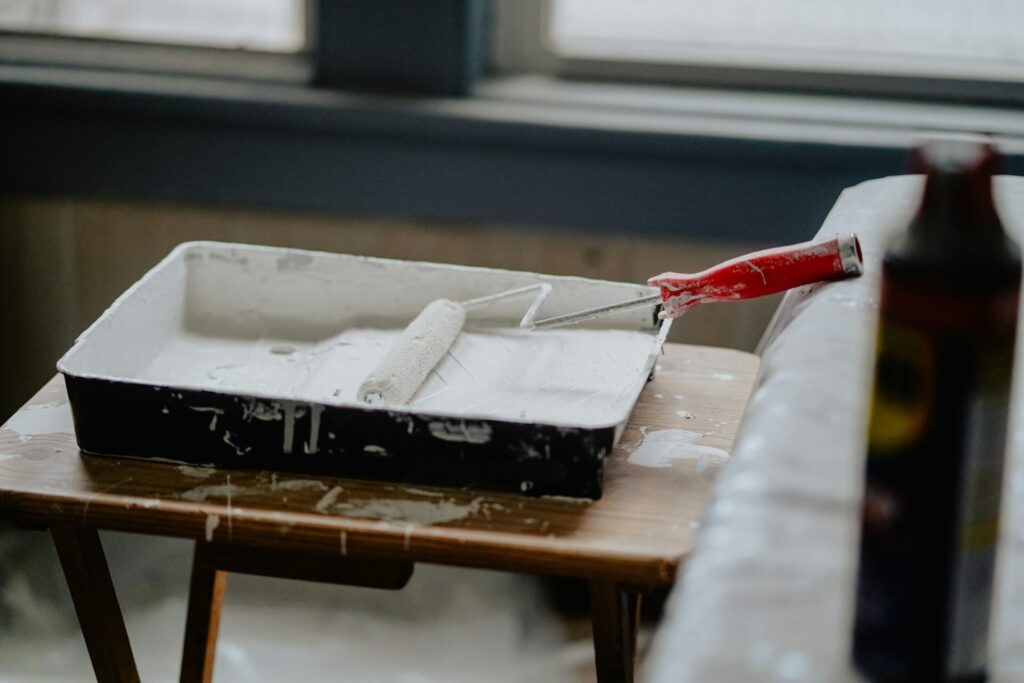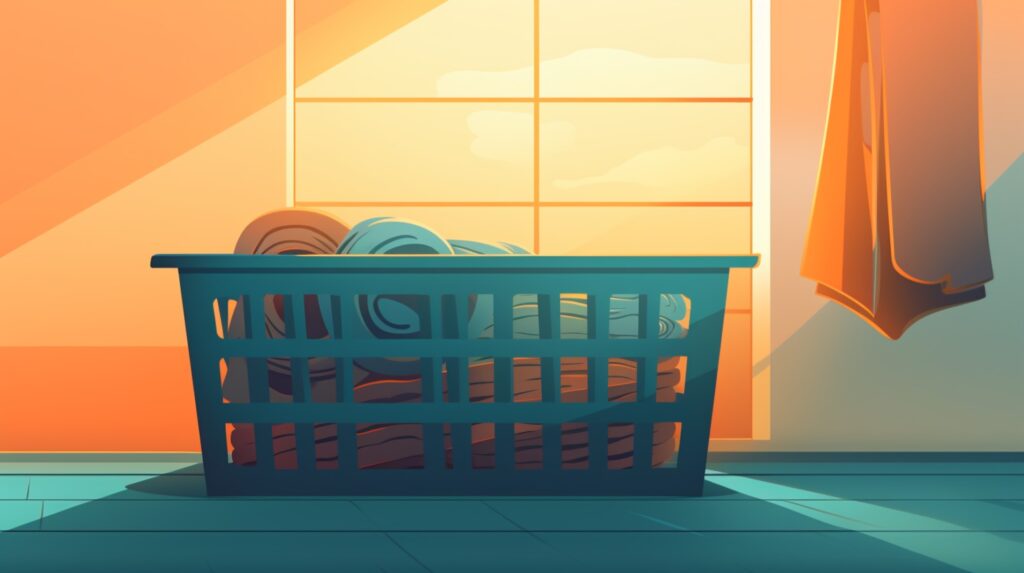Clean Outdoor Furniture: The Ultimate List of Dos and Don’ts for Outdoor Furniture Care
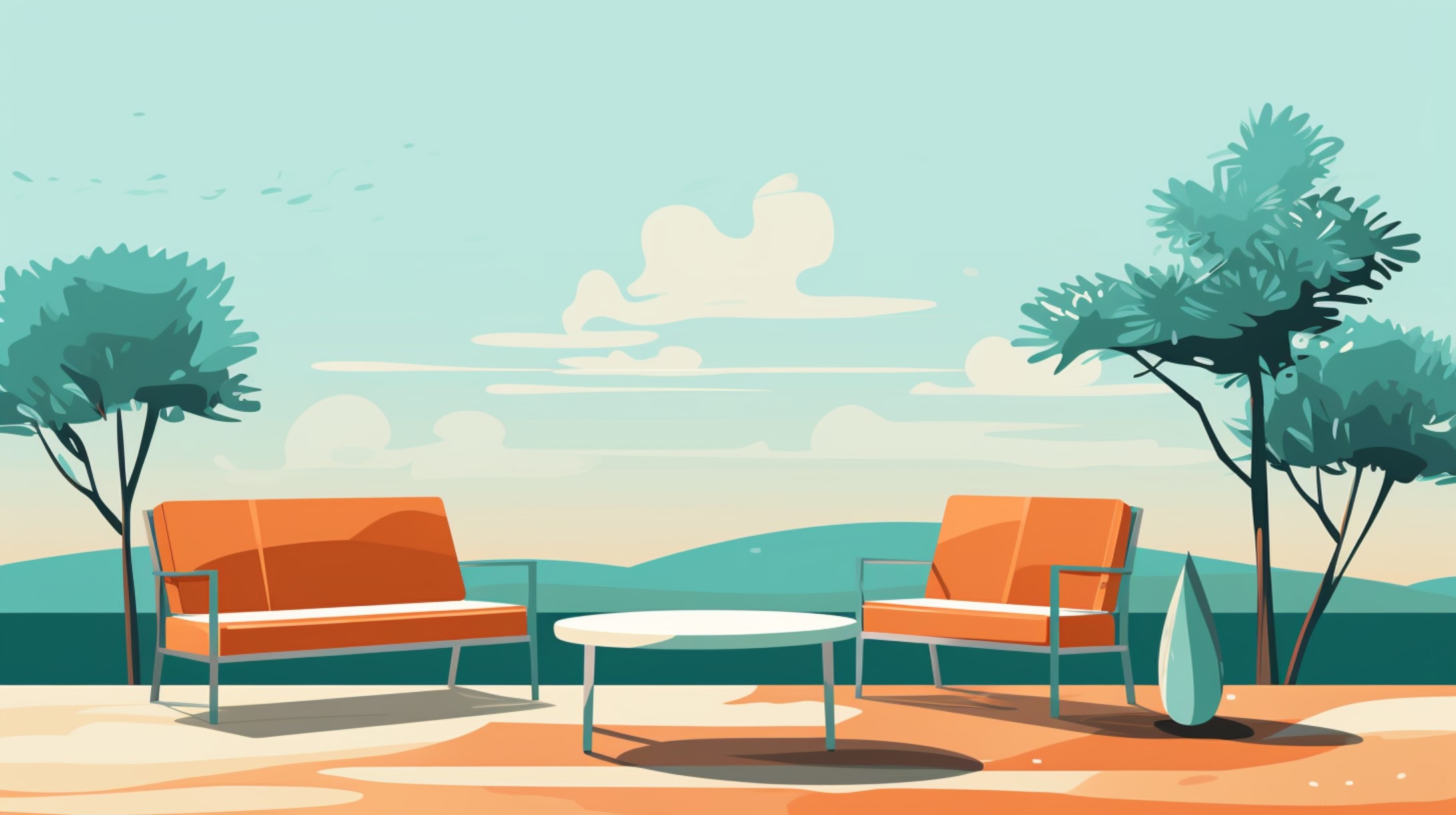
We are reader-supported. When you buy through links on our site, we may earn an affiliate commission.
Maintaining clean outdoor furniture can extend its life span and keep your outdoor space looking beautiful. Whether you have a cozy set of wooden hairs or a luxurious patio set, following some key practices can make all the difference. Here’s the ultimate list of dos and don’ts for outdoor furniture care to help you preserve your space.
The Importance of Clean Outdoor Furniture
Clean outdoor furniture is essential to keeping your outdoor area looking fresh and maintaining your pieces’ longevity. It also provides a more inviting and comfortable environment for relaxing and entertaining guests.
Regular cleaning prevents dirt, mold, and mildew buildup, which can cause discoloration, unpleasant smells, and even damage over time. Taking the time to maintain your outdoor furniture ensures it remains in good condition and extends its life, providing lasting value and enjoyment.
The Dos
Taking proper care of outdoor furniture involves more than just occasional cleaning. Consistent maintenance and smart preventive measures can dramatically extend your pieces’ life span, keeping them looking new and functional through the seasons. Here are some essential dos to maintain clean outdoor furniture:
Do Clean Metal Furniture With Rust-Preventive Solutions
Use water and mild detergent to clean metal furniture, and follow up with a rust-preventive spray or wax. This protects against rust and corrosion, especially if you live in a humid or coastal environment.
Do Rinse Off Salt and Chlorine Residue
It’s common to hop out of the pool and jump straight onto your outdoor sofa, but chemicals from the pool can wreak havoc on your cushion covers and furniture. If your furniture is near a pool or ocean, rinse it regularly with fresh water to remove any salt and chlorine, which can corrode metal and discolor fabrics.
Do Use UV-Protective Sprays
UV-protective sprays can prevent fading and degradation caused by sun exposure to plastic, resin and even fabric furniture. Apply these sprays at the start of the season and reapply as needed.
Do Sand and Refinish Wooden Furniture Periodically
If you have wooden furniture, especially if it’s untreated or painted, sand and refinish it every few years. Begin with lower gauge grits, slowly working toward #220 to #320 grit until smooth. The lower the grit number, the rougher the texture will be. This process removes surface imperfections and renews the protective finish, preserving the wood’s integrity and appearance.
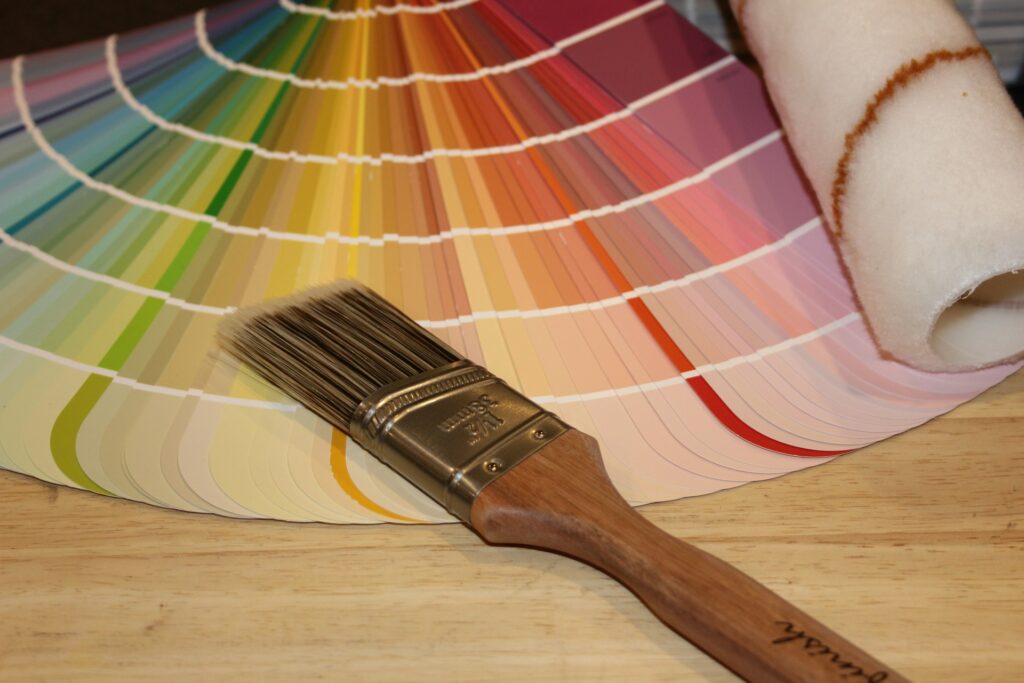
Do Use Felt Pads or Furniture Glides
Use felt pads or furniture glides under the legs of your chairs and tables. This prevents scratches on decking or patio surfaces and reduces wear on the furniture legs themselves.
Do Choose Weather-Resistant Materials
Opt for weather-resistant materials like teak, cedar, aluminum, or synthetic wicker when purchasing outdoor pieces. These materials are designed to withstand the elements and require less maintenance. Other weather-resistant options include:
- Wrought iron
- Stainless steel
- Synthetic resin
- Eucalyptus
- Powder-coated steel
Do Plan Proper Storage
If you have limited indoor storage space, consider foldable or stackable furniture options. These pieces can be easily stored away during harsh weather or the off-season, and you’ll save plenty of space.
Do Clean Regularly
Regular cleaning prevents dirt and grime build up. Wipe down your furniture weekly and do a more thorough cleaning monthly, especially during the warmer months when it’s used more frequently.
Do Cover Furniture When Not in Use
Covers protect your furniture from the elements, including sun, rain and dust. Invest in high-quality, weather-resistant covers that fit well to prolong the life of your outdoor pieces. Additionally, move furniture to a shaded area or install an umbrella or canopy to prevent sun damage.
Do Store Cushions and Fabrics Indoors
Cushions and fabric components are particularly vulnerable to weather and moisture. When not in use, store them indoors or in a waterproof container to prevent mildew and fading.
Do Treat and Seal Wood Furniture
Wooden furniture should be treated with oil or a sealant to protect against moisture and UV rays. This preserves the appearance but also prevents cracking and warping, ensuring your belongings last for years to come.
Do Address Rust and Mold Promptly
Rust and mold can quickly deteriorate outdoor furniture. Address these issues with appropriate treatments, such as rust removers or mold cleaners, as soon as they appear.
Do Check Furniture Regularly
Inspect your furniture for signs of wear and tear. Tighten screws, check for loose parts and repair any damage immediately to avoid larger issues later on.
The Don’ts
Just as there are best practices for maintaining outdoor furniture, there are also common pitfalls to avoid. Missteps in care can lead to unnecessary wear and tear, reducing your pieces’ longevity and aesthetic appeal. Here are some key don’ts to keep in mind:
Don’t Use Harsh Chemicals
Avoid bleach, ammonia and other harsh chemicals as they can damage the finish and weaken the material. Always opt for gentle, non-abrasive cleaners, such as:
- Mild dish soap and water
- White vinegar and water
- Baking soda paste
- Commercial gentle cleaners with non-toxic, biodegradable ingredients
- Lemon juice and olive oil
Lemon juice, vinegar and baking soda are fantastic cleaning agents and they’re environmentally friendly, so you won’t harm the planet or impact your health. Plus, they’re often cheaper than store-bought alternatives.
Don’t Pressure Wash
While it may seem convenient, pressure washing can strip finishes, splinter wood and damage delicate surfaces. Stick to gentle cleaning methods and tools.
Don’t Leave Furniture Exposed During Harsh Weather
Prolonged sun, rain, snow, or wind exposure can damage outdoor furniture. Store sofas, tables, and chairs in a sheltered area or cover them with covers to protect them from extreme weather conditions.
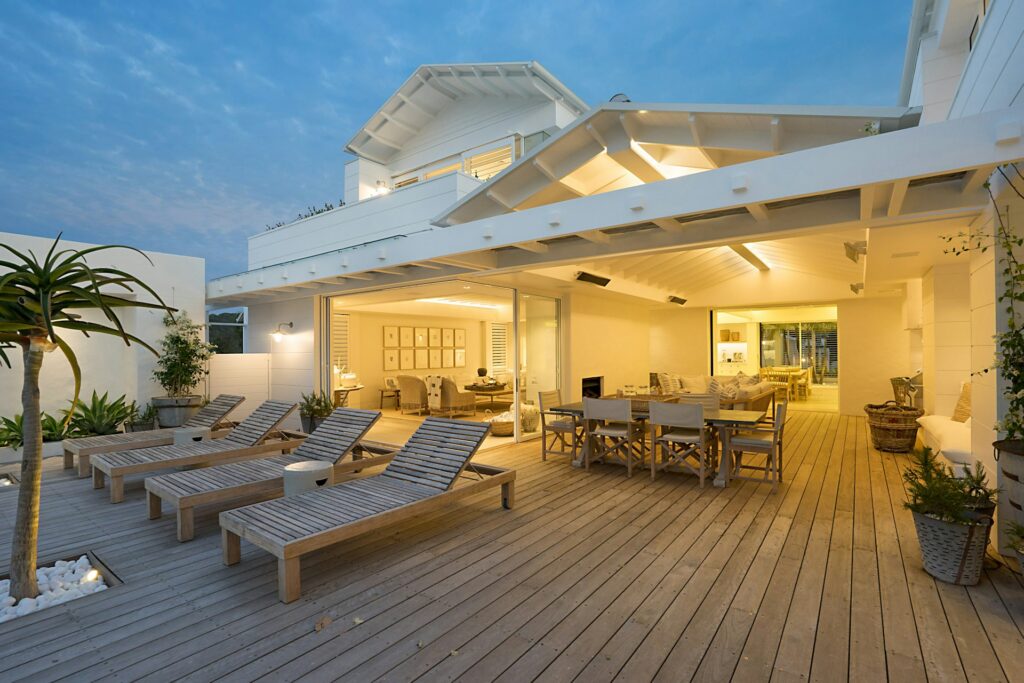
Don’t Forget to Dry Thoroughly
After cleaning or getting wet from the rain, dry your furniture thoroughly to prevent mold and mildew growth, which can pose health risks. Wipe down all surfaces and allow cushions to air out completely.
Don’t Overlook Regular Maintenance
Regular maintenance, such as oiling wood or tightening bolts, is crucial. Ignoring these tasks can lead to bigger problems like structural damage or the need for replacement.
Don’t Leave Umbrellas or Awnings Open in Strong Winds
Always close umbrellas and retract awnings during windy conditions to prevent damage. These items can act as sails and cause the furniture to tip over and break.
Don’t Place Furniture Directly on Grass
Avoid placing furniture directly on grass for extended periods, as moisture from the ground can lead to rust or rot. Use patio stones, decking or a mat as a barrier.
Don’t Drag Furniture
Dragging furniture can damage both the furniture and the surface it’s on. Lift and carry items or use furniture glides, especially on rough surfaces like concrete or stone.
Don’t Use Sharp Objects to Remove Debris
Avoid using sharp objects like knives or metal scrapers to remove stuck-on debris. This can scratch and damage the surface. Use a soft brush or cloth instead.
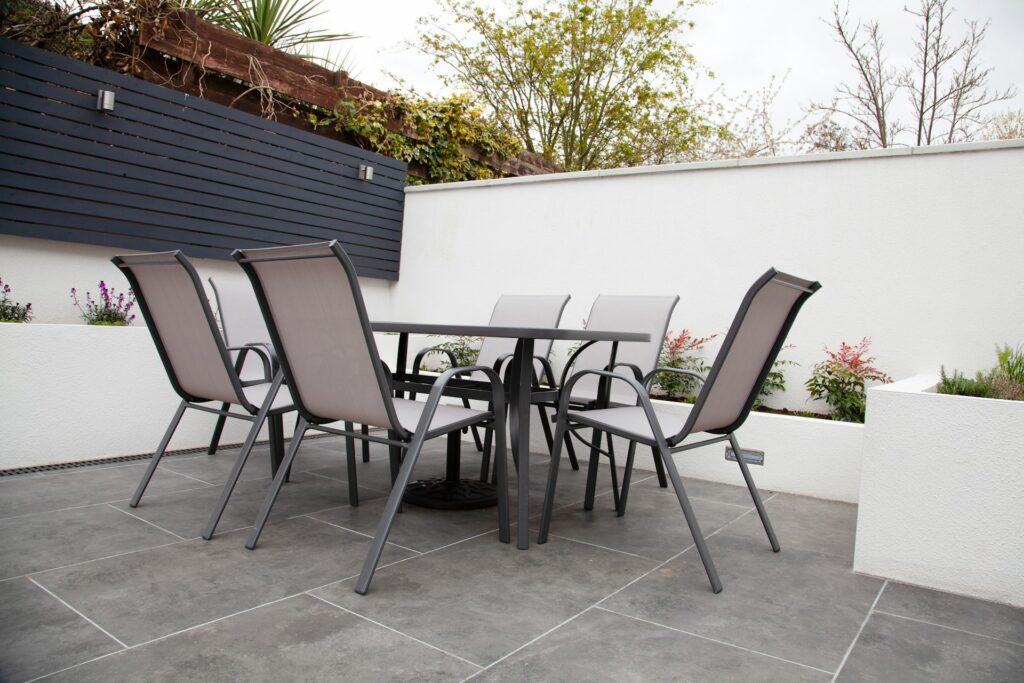
Don’t Use Abrasive Tools
Scrubbers, steel wool, and other abrasive tools can scratch and damage your surfaces. Instead, use soft cloths, sponges, or brushes with soft bristles.
Don’t Skip Off-Season Storage
During the off-season, particularly if you live in a colder climate, store your furniture in a garage, shed or other protected space. This prevents damage from frost, snow and ice.
Don’t Forget to Rotate Cushions
Rotating cushions and pillows every few weeks ensures even wear and prevents dents from forming. It also helps the fabric wear evenly, maintaining their appearance longer.
The Best of Outdoor Living
Well-maintained and clean outdoor furniture enhances your space and extends its life span, making your area more enjoyable year after year. By following these dos and don’ts, you can ensure your outdoor furniture remains in tip-top shape, ready for use whenever needed.





